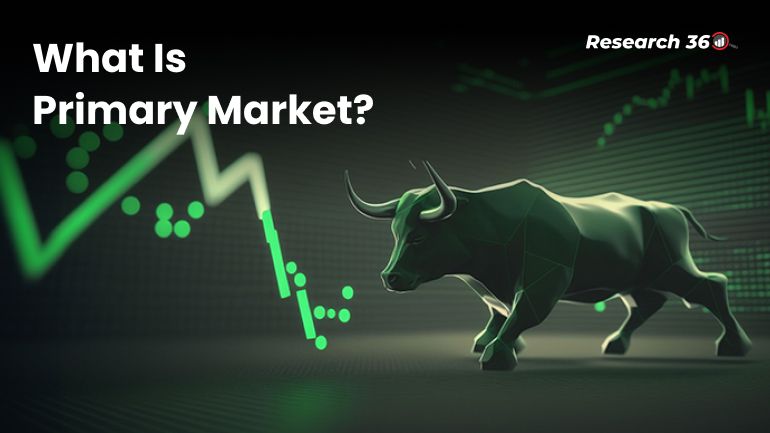What Is Primary Market? Meaning, Functions, Advantages & Disadvantages

The financial market can be categorized into two types - the primary market and the secondary market. Most retail investors focus on trading and investing in the stock exchanges, which are considered to be the secondary market. However, the primary market can also be a great way to invest in companies for long-term wealth creation. Here’s a comprehensive overview of the primary market and its various advantages and disadvantages.
What is the Primary Market?
Also known as the new issue market, the primary market refers to a financial market where securities are issued to the public for the first time. Financial instruments like stocks, bonds, debentures and mutual funds are issued to the public through this market.
Initial Public Offering (IPOs) and New Fund Offers (NFOs) are two examples of the primary market. IPOs are used by companies to raise capital by issuing newly created shares to the public for the first time. NFOs, on the other hand, are issued by mutual fund houses and Asset Management Companies (AMCs) to raise capital from investors, which is used to invest in a basket of different assets.
What is the Function of the Primary Market?
The principal function of the primary market is to enable companies, governments, mutual fund houses and other entities to raise capital from the general public. The funds raised through the primary market are often used to meet a wide range of financial objectives such as funding new projects, expanding the business, investing in new technology, repaying debt, and other business-related activities.
In addition to providing access to capital, there are other primary market functions as well. As a matter of fact, many companies use the market as a means of price discovery. The book-building process of an Initial Public Offering is a good example. In a book-built IPO, the company sets a price range for its shares. Interested investors are required to place bids within this range, which will then be used to determine the final issue price of the shares. Such price discovery ensures that the securities are offered at a fair and reasonable value to both issuers and investors.
What are the Advantages of the Primary Market?
Now that you know the meaning of the primary market and its various functions, let’s look at some of the key advantages it offers to both companies and investors.
Underwriting
New issues in the primary market are mostly underwritten by investment banks. Underwriting eliminates the risk of the issue being unsubscribed or undersubscribed. Investment banks and other financial institutions that underwrite an issue in the primary market ensure that the issue is fully subscribed by taking on the unsubscribed portion of the issue themselves.
Heavily Regulated
Entities issuing securities in the primary market should adhere to several stringent regulatory requirements laid out by the Securities and Exchange Board of India (SEBI). Such tight regulations ensure transparency and protect investors’ interests.
Enhanced Brand Value and Visibility
Companies that list their securities on the stock exchange after a successful primary market debut often enjoy enhanced visibility, reputation and recognition. The listed companies can leverage the improved brand value to access more projects and funding.
Exit for Initial Investors
The primary market, specifically the IPO market, allows early investors to exit or trim their holdings in a company by selling their stake to the public. By liquidating their holdings, promoters and initial investors can realize the gains from their investments.
Access to New Investment Opportunities
The primary market can provide investors with access to new investment opportunities that are not available in the secondary market. Investing early in a company at an attractive valuation can significantly enhance your returns once the company grows in the future.
What are the Disadvantages of the Primary Market?
While the primary market offers plenty of advantages, it also has its share of disadvantages. Here’s a quick overview of a few drawbacks.
High Costs
Issuing securities through the primary market can get quite expensive. The issuing entities will have to incur a wide range of expenses such as underwriting and accounting fees, legal expenses and regulatory compliance fees, among others.
Overvaluation
Since the pricing of securities offered through the primary market is determined by market sentiment and demand, they can be overvalued. The inflated prices of securities in the primary market usually go through a price correction once they are listed in the secondary market, leading to losses for the investors.
Limited Information
The primary market involves entities that are relatively new and unknown. This makes it harder for investors to gain access to company information. Apart from the prospectus or the offer document, there’s not much information surrounding the issuing entity, making it challenging to accurately assess the prospects and risks.
Conclusion
With this, you must now be aware of the various primary market functions, their benefits and drawbacks. The market is a crucial platform for both investors and companies to meet their respective financial objectives. That said, before you decide to invest in an asset through the primary market, make sure to consider the risks and disadvantages. This will help you make the right investment decision.

















